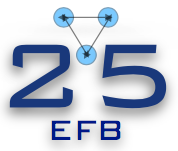Speaker
Description
The optical potential is a well-known and successful framework to describe nucleon-nucleus scattering processes. Within this approach it is possible to compute the scattering observables for elastic processes across wide regions of the nuclear landscape and extend its usage to inelastic processes and other types of reactions such as nucleon transfer, capture or breakup. A phenomenological approach is usually preferred to achieve a good description of the data; however, it lacks predictive power due to the presence of free parameters contained in the model that need to be fixed. With the upcoming facilities for exotic nuclei, such as FRIB, we strongly believe that a microscopic approach, completely free from phenomenology, will be the preferred tool to make reliable predictions, assess the unavoidable approximations, and provide a clear physical interpretation of the process under consideration. The Watson multiple scattering theory provides a successful framework to derive such optical potential for the intermediate energy regime, which is obtained as the folding integral of the nucleon-nucleon scattering matrix and the nuclear density, that represent the two fundamental ingredients of the model. After two decades of advances in theoretical nuclear physics, it is now possible to calculate these two quantities using the same inter-nucleon interaction that is the only input of our calculations. Despite the good results obtained so far, there are still several extensions of the model currently under development, such as the inclusion of medium effects for low-energy calculations, the extension to heavier systems, the inclusion of double scattering effects, and the extension to inelastic scattering. The last one is particularly important for an entire class of experiments that usually need the subtraction of inelastic contributions to perform a correct data analysis. A summary of the past achievements along with a detailed explanation of the new challenges will be presented.

